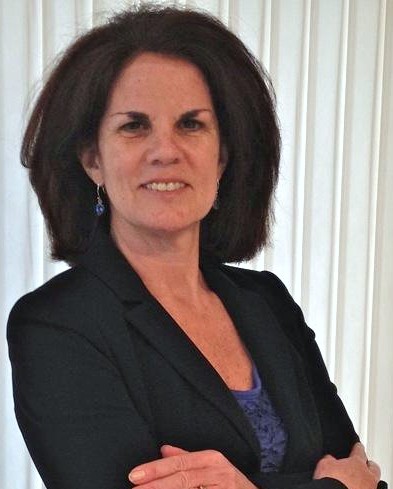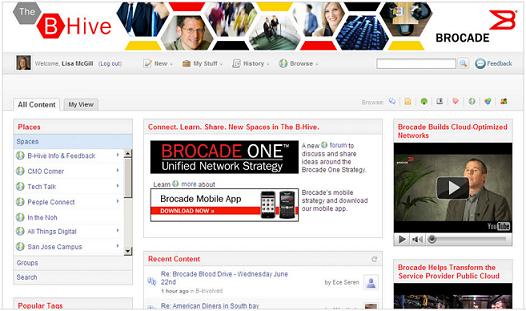Entries in listening online (3)
Deja Vu. Data- Driven Retail Strategies, For Health Care This Time
 April 9, 2012
April 9, 2012 
Health care companies today are following in the footsteps of the retail-oriented, information based financial services industry.
What financial services companies have discovered is that in order to build their business, they must build a personal relationship with the consumer. They accomplished this by creating a consumer-centric database, monitoring shopping behavior through reporting and analytics, motivating activity through multi-channel communications and launching a loyalty program to reward consumer spending,
I was part of this customer-centric transformation as the Director of Database Marketing at GE Capital, which provides private label credit card programs for Disney and Apple, to name a few marquee brands. My cross- functional team started with the consumer in mind. We envisioned the experience that our retailer customers needed to deliver to their consumer card holders to differentiate themselves in the marketplace and capture a larger mind share and business share.
This is the same path that health care companies are marching down to get ready for new customers.
Consumers Are Coming! Health Care Companies Invest in Retail Strategies
In their report on “The Era of the Health care Consumer,” Accenture describes the shift in responsibility from the employers to the consumers and the resulting health care company investment changes from BTB to BTC. Accenture cites the opportunity to learn from the retail sector, especially the segmentation, profiling, loyalty and cross channel communications.
A few health care organizations are making the needed investments to move closer to the consumer in order to better understand their needs for information and tools to support health management. Aetna, for example, has partnered with Best Buy to sell wellness programs to consumers within the retail store and deliver their wellness coaching program online. In addition to store fronts, Florida Blue (previously BCBS Florida) has invested in their Guidewell online initiative to build a relationship with consumers beyond their member base.
Most health care companies, however, are still trying to figure out where to begin.
Barriers for Data-Driven Retail Health Care
There are several key barriers that Health care companies must overcome in order to effectively engage these retail consumers.
- Knowledge about the New Consumer: Health care companies have limited or no information about their newest customer that is either considering their health product/service or has just come onboard. As a result, the interaction can feel less satisfying. Using best practices from the financial industry, health care organizations can utilize segmentation and profiling to deliver a more personalized experience while gathering knowledge about the consumer through each touch.
- Knowledge about Consumers' Data Needs: During their recent research, IDC Health Insights learned that “despite large investments meant to extend the organizations’ consumer-centric model, health plans know little about how consumers want to consume information…”. Financial Services companies remain aligned with their customers by inviting them to participate in their own private branded online research community. The company captures consumer input and feedback on their product road map and new marketing initiatives.
- Knowledge about Proactive & Personalized Communications: Many health care organizations wait for consumers to come to their online marketing destinations including their website and social media and then wait for them to return. Although these companies maybe have tools in place to capture the contact information of interested consumers, they tend to send out the same information to everyone. Financial Services companies segment these target consumers and stream content of interest across their preferred communication channels to bring them back and engage.
- Knowledge about Developing a Personalized Incentive Program: One way that health care companies can differentiate themselves is with an incentive program that rewards a consumer for healthy lifestyle behaviors that fit her profile. One of the reasons that some credit card loyalty programs (e.g. American Express) are so effective is that they target personalized offers based on each consumer’s spending behavior profile.
Health care companies can learn from the leaders in the Financial Services industry about how to leverage technology to build a retail consumer relationship through ongoing personalized communications and programs which are aligned with the consumer’s ongoing data needs.
Employee Engagement Series: Employee Social Online Community, Mobile & Employee Wellness Advisory Council
 June 20, 2011
June 20, 2011 “My participation in online communities (within BHive) provides me with a platform to engage & converse with my peers and build camaraderie based on shared interests. Through ‘Tastebuds’, our online community for foodies within Brocade, I have engaged like-minded individuals to discuss recipes, exchange restaurant reviews and promote healthy eating, resulting in a sense of belonging centered around a common interest.”
BHive is a private online employee social community. BHive is leveraged to help promote many wellness initiatives which helped make Brocade one of the top 100 companies to work for, making Fortune’s 2011 & 2010 list.
Within BHive, employees friend and follow each other as well as earn points for posting and answering questions and contributing to discussions. The most popular topics that Brocadians are discussing online are WellFit (includes ViveCoach challenges, Sports Groups), WIN (Women in Networking), BInvolved (volunteerism & community involvement) and San Jose Campus (employees posting photos from various work events like the annual Chili Cookoff). Brocade uses BHive to gather information from employees through polls and discussions and generate engagement in offline company and community events. During May, employees worldwide participated in “Bike to Work” and posted their photos online.
With the ViveCoach platform, Brocade engages employees through their mobile phones. During social challenges, employees receive mobile messages about additional challenge points needed by their team, team work-out reminders, healthy nutrition or fitness tips, reminders (“drink lots of water” or “take the stairs”), team banter and leader board status. Brocade had a team of remote employees join a recent challenge and they are planning a competition that includes spouses and family members. “We believe that it is important to include employee’s family members so these lifestyle changes become more sustainable”, explains Lisa McGill, VP, Worldwide Human Resources at Brocade.
What is the secret for being on the leading edge of employee engagement? In June 2010, Brocade launched their WellFit Council with 15 representatives from all departments and geographies. These employee advisory Council members are divided into four work teams (Health & Wellness, Fitness, Education & Communities) and meet once per month to provide input and guidance on wellness related events, education, communication channels/content and metrics to motivate and measure engagement at Brocade. Each employee member leverages their own employee network to bring additional ideas and feedback to the Council meetings and into the dedicated online WellFit Council discussion area within BHive. “Being part of the Council has been a great experience and for me it has really affected how I manage my health, wellbeing and work-life balance. Some of the ideas are even rubbing off on my husband”, shares one WellFit Council member.
Learn more about Brocade’s successful initiatives to drive employee engagement at the Healthcare Unbound conference panel, "New Directions in Employee Engagement: Competition, Coaching, Community and Compensation".
Blazing Your Social Media Engagement Path
 May 18, 2010
May 18, 2010  “We’re already using Facebook, YouTube and Twitter. Where do we go from here?”
“We’re already using Facebook, YouTube and Twitter. Where do we go from here?”
“We have several separate and disconnected social media efforts now but we want to bring them together as part of a social media plan.”
“How can we listen online and engage consumers around wellness?”
“Where do we begin to develop a private online community for ‘Women’s Health’ to use for our product research?”
Businesses are increasing their investments and are ready to move to the next level in their social media efforts. They are forming “Social Media Committees” to begin defining and prioritizing their social media initiatives. Every company can create a unique social media plan drawing upon their set of healthcare relationships, partnerships and resources to deliver value to the consumer. However, how many are actually designing their plan with consumer engagement in mind?
Viewing Your Plan from the Consumers’ Eyes
As you are creating more social media, keep in mind that consumers are already overwhelmed with the current number of online healthcare destinations for them to learn, share and connect with others like them. Before investing any more resources, think about how you can bring consumers relevant and compelling “content” and capabilities that they will value (as opposed to what you have to offer).
Stepping Stones to Follow:
After you’ve defined your goals and assembled your team, these are the steps to move your social media initiatives forward.
1) Listening to Your Target Consumers (Segments)
One essential best practice is to gather insight to understand the health and wellness issues and interests of these consumers and to leverage that information into action. Consider all the opportunities that you can uncover by mining “consumer- generated content” both within your own company’s social media and from online conversations outside of your site and your social media boundaries.
What makes this more complex is that your target consumers have varying needs so you will want to listen to the needs of each of your priority consumer “segments”. For example, you may segment your target consumers by condition, gender or life stage. Where will you go to listen to your priority consumer segments?
2) Engaging Consumers & Acting on their Insight
Through exploratory discussions with your target consumers, you can discover areas of value such as new online decision tools, new ways to “package” content and new channels to deliver this content. Often times, their ideas shed light on new partnerships which yield differentiated products, services and programs for your company. These insightful ideas are often from your key contributors. The ideas make your community dynamic and motivate others to participate. How can you exploit their influence across your social media?
Once new opportunities are surfaced, the key is to define them with your target consumers. By “co-creating” with them, you will ensure that you have conceptualized, developed and validated these new offerings to meet their evolving needs.
Another benefit of engaging consumers is capturing their words which can be injecting into your marketing channels (e.g. website, social media, program brochures, etc).
3) Evaluating Your Social Media Engagement Initiatives
You will need both qualitative and quantitative information to evaluate your social media initiatives against your business goals.
The qualitative information that you collect through your social media efforts is very valuable since it gives you and your team insight to guide your product, partnership and marketing strategies. It is essential to track how these insights are being used by your company to measure their real value (e.g. saving money, generating revenue).
There is a set of quantitative metrics that you will benchmark and monitor to identify your most effective tactics. These metrics are often around participation in your various social media activities.
How About Your Social Media Engagement Path
- What have you learned while listening to consumers online?
- Are you launching new engagement tools to get your target consumers to interact with you?
- How are you mining and leveraging insight from consumer generated content to inform your company’s business strategies?
You have an opportunity to devise a comprehensive plan with best practices and processes for exchanging value with your target consumers through your social media initiatives. Instead of launching tools in isolation, take the lead in bringing your team together to develop a Social Media Engagement Plan designed with your business goals in mind.



